| Belongs to |
Baltic lithostratigraphy (Silurian)
|
| Type | lithostratigraphy |
| Rank | Formation |
| Original rank | substage |
| Scope | regional |
| Status | formal standard |
| Author | Bekker |
| Year | 1925 |
| Etymon | Rootsiküla vil. (E) |
| Original locality | Viita quarry |
| Age (Ma) |
Rootsiküla Stage
|
| Index | K1R |
| Alt. index | S2rt |
| Date added | 2009-04-21 |
| Date changed | 2011-08-19 |
| Locality | Type | From (m)1 | To (m)2 | Reference | Remarks |
|---|---|---|---|---|---|
| Viita quarry |
holostratotype
| Einasto, 1970c | destroyed | ||
| Vesiku creek |
neostratotype
| Nestor, H., 1987a | at Roosiküla | ||
| Kipi borehole |
hypostratotype
| 25.6 | 53.6 | Einasto, 1970c | Särghaua dep. |
| Reference | Content | Year1 | Pages | Remarks |
|---|---|---|---|---|
| Einasto, 1962 |
1962
| |||
| Einasto, 1975a |
1975
| |||
| Aaloe, Ago, 1963c |
1963
| |||
| Bekker, 1925a |
1925
| |||
| Luha, 1932a |
1932
| |||
| Nestor, H., 1987a |
1987
|
Rootsiküla Stage
by H. Nestor
Original text from: Raukas, A., Teedumäe, A. (eds). 1997. Geology and Mineral Resources of Estonia. Estonian Academy Publishers, Tallinn. 436 pp. ISBN 9985-50-185-3. Available online at: sarv.gi.ee/geology.
The Rootsiküla strata were established by Bekker (1925) as the Rootsiküla-Kaarma Substage of the Saaremaa Stage (= “Obere Oeselsche Gruppe” by Schmidt 1858, 1881). Later Luha (1933) raised the unit into the stage rank and introduced the name Kaarma. Einasto (1970) motivated the use of the name Rootsiküla. He also defined the boundaries of the stage and subdivided it into beds. Viita quarry, the historical stratotype, has been destroyed. The Kipi drill core in the interval of 25.6 to 53.6 m has been treated as the hypostratotype of the stage (Einasto 1970, Nestor 1993). The Rootsiküla Stage spreads in middle and southern Saaremaa, in the western part of the Tõstamaa Peninsula and on Kihnu and Ruhnu islands. The outcrop forms a 4–10-km-wide belt running through the central part of Saaremaa from Atla to the Kübassaare Peninsula. On mainland, it reaches the Seliste Village on the Tõstamaa Peninsula (Fig. 72). The main localities are the coastal cliffs at Elda, Soeginina, Anikaitse and Kübassaare, the Vesiku Rivulet and an abandoned quarry at Pamma. In Estonia, the full thickness of the stage varies from 20 to 40 m and increases rapidly southwards, towards the Kurzeme Peninsula (Fig.72).
The Rootsiküla Stage consists of various skeletal, pelletal, lithoclastic, coquinoid and micritic limestones cyclically interbedding with argillaceous sedimentary dolomites (the so-called Eurypterus and pattern dolomites). Limestones form the lower and dolomites the upper part of the shallowing-up sedimentary cycles. Microbial-algal structures (oncolites, stromatolites) are frequent. The limestones are often dolomitized and in the eastern part of the distribution area the whole sequence consists completely of dolomites. The lower boundary of the stage has been determined at the base of a stratum of skeletal pack- or grainstones forming the lowermost part of the Viita beds which disconformably overlie the first thick stratum of lagoonal dolomites (Selgase Member of the Jaagarahu Formation) in the Middle-Estonian Confacies Belt and unnamed members of skeletal grainstones at the top of the Sõrve and Riksu formations in the South-Estonian Confacies Belt. In the Ohesaare boring these basal-Rootsiküla nodular packstones contain the Beirichia subornata ostracode fauna characteristic to the Mulde Marls on Gotland and correlatable with the Gothograptus nassa graptolite zone.
The Rootsiküla Stage contains sparsely distributed and specific fossil biota. Eurypterids, thelodonts, leperditian ostracodes, specific gastropods, bivalves, oncolites, stromatolites are common indicating the shallow, near-shore environments. The most typical species are (abbreviations: rt - Rootsiküla Formation, Vt - Viita beds, K - Kuusnõmme beds, Vs - Vesiku beds, S - Soeginina beds): Araneosustroma stelliparratum (Nestor) (rtK), Parastriatopora commutabilis Klaamann (rtK,S), Howellella cuniculi Rubel (rtVt), Straparollus (S.) helicites (Sowerby) (rtVs), Murchisonia (Hormotoma) compressa Lindström (rt), Hermannina phaseola (Hisinger) (rt), Bingeria vesikuensis Sarv (rtVt), Beirichia subornata Martinsson (rtVt), Balteurypterus remipes tetragonophtalmus (Fischer) (rtVt,Vs), Ctenognathodus murchisoni (Pander) (rt), Ozarkodina bohemica bohemica (Walliser) (rtVt), Logania martinssoni Gross (rt), Tremataspis schmidti (Rohon) (rtVt,K,Vs). The presence of Ozarkodina bohemica bohemica enables to date the Rootsiküla Stage as top Wenlock - basal Ludlow.
In Estonia, the Rootsiküla Stage is represented by the Rootsiküla and Sakla formations laterally replacing each other (Fig. 70). The Rootsiküla Formation is distributed on Saaremaa Island, except its easternmost part. The formation is represented by cyclically alternating limestones (often secondarily dolomitized) and argillaceous sedimentary dolostones. Limestones are prevailingly skeletal and pelletal grainstones containing in places oolites, oncolites and intraclasts. Biomicritic and micritic limestones also occur on some levels. Argillaceous dolomites and dolomitic marlstones form the upper part of the sedimentary cycles. They are laminated Eurypterus dolomites or massive bioturbated pattern dolomites. Four cycles have been distinguished in the Rootsiküla Formation (Einasto 1970) defined as beds. The lowermost, Viita beds begin with comparatively normal-marine biomicritic limestones and end with typical Eurypterus and pattern dolomites. The Kuusnõmme beds form a thin uncomplete cycle with coral-stromatoporoid or oncolitic limestone in the lower and pattern dolomite in the upper part. The Vesiku beds begin with sparitic limestones, pelletal, oolitic, coquinoid or lithoclastic grain- or floatstones and their dolomitized counterparts and end with the thickest band of Eurypterus and pattern dolomites. The Soeginina beds form an untypical cycle with totally dolomitized porous grainstones in the lower, thick stromatolite band in middle and pattern dolomites in the upper part. The Sakla Formation is developed in southeastern Saaremaa, on Kihnu Island, and on the Tõstamaa Peninsula in mainland Estonia. It is represented by comparatively monotonous, thick-bedded, bioturbated dolomites with numerous pyrite patterns and undefinite cyclicity.



